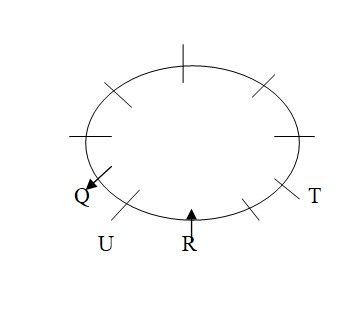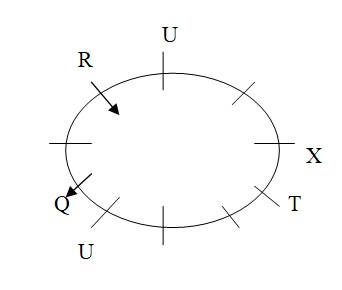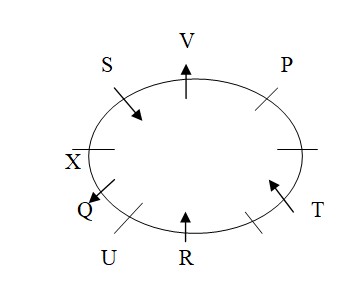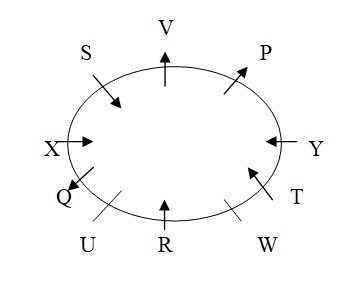Question
What is the position of Q with respect to
W? Answer the questions based on the information given below. Ten persons P, Q, R, S, T, U, V, W, X and Y sit around a circular table such that four of them face outside while others face towards the centre. No two persons with names starting with consecutive alphabets are immediate neighbors of each other. T sits 4th to the left of Q, who faces outside. U sits immediate left of R, who faces towards the centre. U and Y face same direction as X. X doesn’t face outside. Two persons sit between X and P, who doesn’t sit 2nd to the left of T. S and V sits immediate left of each other. X sits 3rd to the left of R. S and T face same direction. Y doesn’t sit adjacent to R. V and W face same direction as P.Solution
T sits 4th to the left of Q, who faces outside. U sits immediate left of R, who faces towards the centre. X sits 3rd to the left of R. So, T sits either 2nd to the right of R or 4th to the left of R. Also, X sits either immediate right of Q or 5th to the left of Q. Case I: T sits 2nd to the right of R:  Case II: T sits 4th to the left of R:
Case II: T sits 4th to the left of R:  Two persons sit between X and P, who doesn’t sit 2nd to the left of T. S and V sits immediate left of each other, this is not possible in case II, so case II is rejected. S and T face same direction. So, S and T face towards the centre and V faces outside.
Two persons sit between X and P, who doesn’t sit 2nd to the left of T. S and V sits immediate left of each other, this is not possible in case II, so case II is rejected. S and T face same direction. So, S and T face towards the centre and V faces outside.  Y doesn’t sit adjacent to R. V and W face same direction as P. U and Y face same direction as X. X doesn’t face outside. So, W faces outside and sits adjacent to R and Y sits immediate right of T. Also, U and Y face towards the centre and P face outside. The final seating arrangement is given below:
Y doesn’t sit adjacent to R. V and W face same direction as P. U and Y face same direction as X. X doesn’t face outside. So, W faces outside and sits adjacent to R and Y sits immediate right of T. Also, U and Y face towards the centre and P face outside. The final seating arrangement is given below: 
What shall be credited to the Depositor Education and Awareness Fund as laid down under the Banking Regulation Act?
As per Section 10, if it is doubtful of which one of several offences a person is guilty, how is punishment determined?
Which Act delas with the provisions relating to prevention of undesirable transactions in securities by regulating the business of dealing therein?
Who is responsible for constituting the High Court Legal Services Committee?
Which section of the Act excludes oral evidence when the terms of a contract have been reduced to writing?
The concept of common intention means_________________
As per the Bharatiya Nagarik Suraksha Sanhita, under what circumstance can a Court of Sessions take cognizance of an offence as a Court of Original jur...
Computer software can be included under the definition of goods was held under which of the following cases?
According to Section 2(3), who is defined as a "child"?
Seller is entitled to rent from the property_____.
Relevant for Exams:


